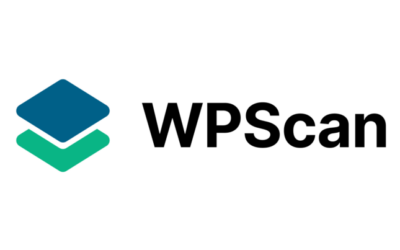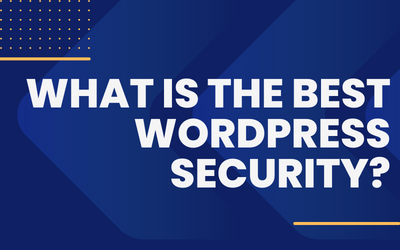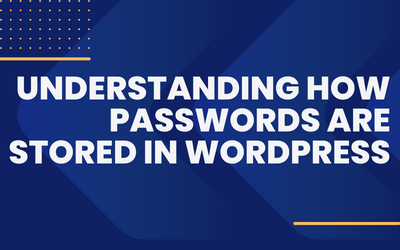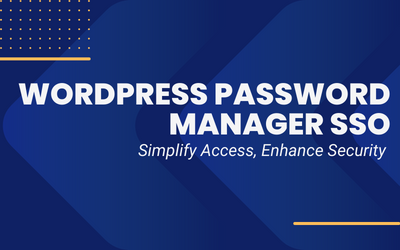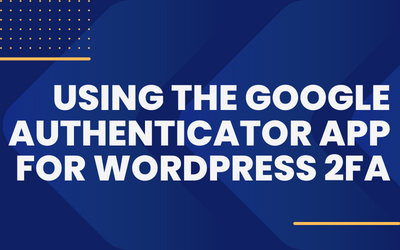WordPress powers a significant portion of the internet, making it an attractive target for hackers and malware infections. As a web development agency, it is crucial to prioritize website security and take proactive measures to prevent malware and hackers from compromising WordPress websites.
This comprehensive guide aims to provide web developers, web administrators, and marketing professionals with valuable insights and best security practices to safeguard WordPress websites against malware attacks.
Table of Contents
Choose Reliable Hosting Providers
When it comes to safeguarding your WordPress website against malware infections, selecting a reputable hosting provider serves as the crucial first line of defense.
Making an informed decision in choosing the right hosting provider is paramount in establishing a secure hosting environment for your website.
To ensure that you make the best choice, consider the following essential factors that can significantly impact the security of your WordPress website.

Reputation and Track Record
Research the reputation and track record of potential hosting providers. Look for providers with a strong industry reputation and positive reviews from customers. A reliable hosting provider will have a proven track record of delivering secure hosting services and maintaining high uptime.
Security Measures
Assess the security measures implemented by hosting providers. Inquire about their firewall configurations, intrusion detection systems, malware scanning, and prevention mechanisms. A reputable provider should have robust security measures in place to proactively detect and prevent malware infections.
Server Hardening
Ask about the server hardening practices employed by the hosting provider. Server hardening involves implementing security configurations and best practices to strengthen the server’s resistance to attacks. This includes measures such as regular software updates, secure file permissions, and disabling unnecessary services to minimize potential vulnerabilities.
Backup and Disaster Recovery
Inquire about the backup and disaster recovery options provided by the hosting provider. It is essential to have reliable backup systems in place, including regular backups and the ability to restore your website to a previous state in case of a malware infection or other unforeseen incidents.
Support and Responsiveness
Evaluate the level of technical support and responsiveness offered by the hosting provider. Prompt and knowledgeable support is crucial in addressing security issues and resolving any potential vulnerabilities quickly. Look for providers with 24/7 support and a reputation for excellent customer service.
Server Resources and Scalability
Consider the server resources allocated to your website and the scalability options offered by the hosting provider. Sufficient server resources ensure that your website can handle traffic spikes and remain resilient against potential attacks. Scalability options allow for seamless expansion as your website grows, ensuring that security is not compromised during times of increased demand.
SSL/TLS Certificates
Check if the hosting provider offers SSL/TLS certificates. These certificates encrypt the communication between your website and its visitors, enhancing security and protecting sensitive data transmitted through your website.
Compliance and Certifications
Inquire about the compliance certifications held by the hosting provider, such as PCI-DSS (Payment Card Industry Data Security Standard) compliance, GDPR, HIPPA, etc. These certifications indicate that the provider adheres to industry best practices for securing sensitive data, adding an extra layer of assurance to the hosting environment.
Regular Updates and Patching
Ensure that the hosting provider maintains a proactive approach to software updates and patching. Regular updates of server software, operating systems, and other components are crucial for addressing security vulnerabilities and reducing the risk of malware infections.
User Reviews and Recommendations
Seek out user reviews and recommendations from trusted sources or online communities. Feedback from other website owners can provide valuable insights into the security practices and overall performance of hosting providers.

By carefully considering these factors when choosing a hosting provider, you can significantly reduce the risk of malware infections and establish a strong foundation for the security of your WordPress website. Remember that the right hosting provider should not only provide reliable hosting services but also prioritize robust security measures, proactive support, and a commitment to ensuring the integrity and safety of your website’s data and resources.
As a summary:
- Opt for Managed WordPress (MWP for short) hosting services that offer enhanced security features and regular malware scans.
- Ensure the hosting provider performs frequent backups and has a robust disaster recovery plan.
- Look for hosting providers that actively monitor and promptly respond to security threats, and offers malware removal services.
- Different hosting locations that are close your target audience, the less distance, the better.
Our favorite hosting providers are:
Kinsta – Premium Managed WordPress Hosting
- Includes CloudFlare WAF, CDN, Edge Caching, SSL and more.
- Powered by Google Cloud fastest machines and offering more than 22 different locations.
- 4 Different type of backups: Daily (can be upgraded to every 6 hours or even hourly for an extra fee), Manual, External (AWS S3 or GCP Storage) & Downloadable.
- Sends Advisories to customers when severe plugin or theme vulnerabilities are disclosed and document.
- Internal Malware Removal service. Not outsourced.
WP Engine – The Most Trusted WordPress platform
- The offer CloudFlare integration as a PAID Add-on.
- Also powered by Google Cloud but using N machines that are slower compared to the C2 machines used by Kinsta and only offering 14 locations.
- Also offers hosting services in AWS and Azure but only on Premium plans.
- Outsourced Malware Removal.
Pagely – Managed WordPress Hosting for Businesses & Enterprise
- Owned by GoDaddy.
- Powered by AWS.
- Offers advanced features such as High Availability & GeoBalancing.
- Regulatory friendly: GDPR, HIPAA, SOX, FISMA, PCI DSS, etc.
- Internal Malware Removal Service. Not outsourced.
Keep WordPress Core, Themes, and Plugins Up to Date
Maintaining a secure website is of utmost importance in today’s digital landscape, especially when it comes to WordPress installations, themes, and plugins.
It cannot be stressed enough that keeping these components up to date is crucial in mitigating potential security risks.
Outdated software, whether it be the WordPress core, themes, or plugins, often harbors known vulnerabilities that malicious hackers are adept at exploiting.


By promptly applying updates, web development agencies can ensure that their WordPress installations are fortified with the latest security patches and bug fixes. These updates address vulnerabilities that have been identified by the WordPress community and developers, effectively sealing off potential entry points for attackers. Neglecting to update software not only leaves websites susceptible to malicious activities but also puts valuable data and sensitive information at risk.
The consequences of running outdated WordPress software are far-reaching. Hackers can take advantage of known vulnerabilities to gain unauthorized access to a website’s backend, enabling them to manipulate content, inject malicious code, or even compromise user data. They can exploit weaknesses in themes or plugins to execute attacks such as cross-site scripting (XSS), SQL injection, or remote code execution. Such breaches not only compromise the integrity and functionality of the website but can also lead to detrimental outcomes like data breaches, compromised user accounts, and reputational damage.

Follow these best practices to reduce the risk of infection:
- Enable automatic updates for the WordPress core to ensure you have the latest security patches.
- Regularly update themes and plugins, removing any outdated or unused ones. The Industry Best Practice is to perform weekly updates.
- Choose themes and plugins from reputable sources and developers who prioritize security and avoid downloading plugins from sites that promote piracy. These plugins and themes usually come bundled with backdoors, SEO Spam and other different types of malware.
Be sure to check this other articles that explain the importance of updates and why you should not promote piracy in the WordPress ecosystem:
- Stay safe, update your Plugins
- Don’t promote piracy in WordPress
- No, you do not need more than 40 WordPress Plugins
Use Strong User Authentication Measures
Enhancing the user authentication mechanisms of your WordPress website not only bolsters its security but also establishes an additional layer of protection against potential threats. Implementing robust user authentication practices is paramount in safeguarding sensitive information, preventing unauthorized access, and maintaining the overall integrity of your website.
By strengthening user authentication, web development agencies can ensure that only authorized individuals have access to the website’s backend and sensitive areas. This serves as a significant deterrent to malicious actors attempting to exploit vulnerabilities and gain unauthorized control over the website. Furthermore, implementing strong user authentication measures establishes accountability and traceability, making it easier to identify and track any suspicious activities.

Enable these features to protect your users:
- Enforce strong passwords: Educate users about the importance of creating unique, complex passwords that include a combination of letters, numbers, and special characters. Emphasize the significance of regularly updating passwords and avoiding common and easily guessable choices.
- Enable two-factor authentication (2FA): Implementing two-factor authentication (2FA) significantly enhances user authentication security. By requiring users to provide an additional form of verification, such as a one-time code sent to their mobile device or email, 2FA adds an extra layer of protection. This ensures that even if a user’s password is compromised, unauthorized access is still thwarted unless the second factor of authentication is provided.
Web development agencies can explore various plugins and tools available for implementing strong user authentication practices in WordPress. These plugins often provide easy configuration options for enabling 2FA, customizing password requirements, and managing user authentication settings.

Furthermore, consider implementing login attempt monitoring and limiting the number of failed login attempts. This approach prevents brute-force attacks by locking out or adding delays for repeated failed login attempts, thwarting automated hacking attempts.
By monitoring and logging login activities, web development agencies can detect and respond to any suspicious login patterns or unauthorized access attempts promptly.
Regularly reviewing and managing user access privileges is also crucial in maintaining a secure authentication environment. Grant administrative access only to trusted individuals who require it for their roles. Remove or disable unnecessary user accounts to minimize potential vulnerabilities and ensure that former employees or individuals no longer associated with the website no longer have access.
Fortifying user authentication mechanisms in WordPress is vital for reinforcing the security posture of your website. By promoting strong passwords, implementing two-factor authentication, monitoring login attempts, and managing user access privileges, web development agencies can significantly reduce the risk of unauthorized access, data breaches, and other security incidents. Prioritizing user authentication security measures instills confidence in users, protects valuable data, and upholds the overall integrity of the WordPress website.

To help you have a better understanding, we offer the following articles:
Implement Web Application Firewalls (WAF)

Web Application Firewalls (WAFs) play a crucial role in safeguarding your WordPress website, acting as an indispensable shield against a wide array of cyber threats. By intelligently filtering incoming web traffic and effectively blocking known attack patterns, WAFs provide robust protection against malicious activities and help maintain the security and integrity of your website.
The primary function of a Web Application Firewall is to serve as a gatekeeper, constantly monitoring and analyzing incoming traffic to identify and mitigate potential threats. By examining HTTP requests and responses, a WAF can detect suspicious patterns, malicious payloads, and common attack vectors commonly used by hackers to exploit vulnerabilities in web applications, including WordPress.
One of the key benefits of a WAF is its ability to filter out malicious traffic. Through the use of advanced algorithms, signature-based detection, and behavioral analysis, the WAF can accurately identify and distinguish between legitimate user traffic and malicious requests. This ensures that only safe and valid requests are allowed to reach your WordPress website’s server, effectively blocking unauthorized access attempts and preventing potential attacks from reaching their intended targets.


Furthermore, WAFs are equipped with an extensive database of known attack patterns and signatures, allowing them to proactively identify and block common attacks such as SQL injection, cross-site scripting (XSS), and remote file inclusion. By leveraging this comprehensive knowledge base, WAFs can effectively recognize malicious patterns and behaviors, immediately neutralizing threats before they can cause any harm to your WordPress website.
It is important to note that WAFs can be implemented at various levels, including network-level, server-level, or even as a plugin specifically designed for WordPress. Each implementation approach offers its own unique advantages and considerations, and selecting the most suitable option depends on factors such as the complexity of your website, available resources, and specific security requirements.
Examples of WAFs:
| Cloud & Network Level | Cloudflare, Sucuri Firewall, Incapsula, StackPath WAF, etc |
| Server Level | ModSecurity, Waflz & Coraza |
| Application Level | WordFence, iThemes Security, All in One Firewall, WP Cerber, WP Defender, etc. |
When deploying a WAF, it is essential to configure and fine-tune its settings to align with the security needs of your WordPress website. This involves setting appropriate security rules, customizing blacklists and whitelists, and implementing rate limiting policies to prevent brute-force attacks or distributed denial-of-service (DDoS) attacks. Regularly updating the WAF’s security rules and signatures is also crucial to ensure it remains effective against emerging threats.
Integrating a Web Application Firewall into your WordPress security architecture is a critical step in safeguarding your website against a multitude of cyber threats. By filtering malicious traffic, detecting and blocking known attack patterns, and leveraging a robust knowledge base, WAFs provide an additional layer of defense, enhancing the security posture of your WordPress website. Deploying and properly configuring a WAF ensures that your website remains resilient against evolving threats, allowing you to focus on providing a secure and seamless user experience.

Be sure to follow these basic steps:
- Utilize WAF plugins or services to safeguard your website from common attack vectors, such as SQL injection and cross-site scripting (XSS).
- Regularly update and configure the WAF to align with the specific security needs of your website. If possible, be sure to setup alerts either via Email, SMS, Slack or similar.
Below are some articles that expand on this topic:
- Implementing CloudFlare
- You need a WAF, here is why
- Stop Hackers in their Tracks with Sucuri Firewall – Your Website’s Bodyguard!
- Unleashing the Cyber Shield: WordFence Plugin for WordPress
Secure File Permissions and Directories
Ensuring the proper configuration of file permissions and the secure management of directories within your WordPress website is an imperative step in fortifying its security framework. By meticulously establishing and maintaining the appropriate file permissions and directory access controls, you can effectively thwart unauthorized access attempts and enhance the overall protection of your website’s sensitive data and critical resources.
File permissions govern the level of access granted to various users and entities interacting with your WordPress website’s files. It is vital to configure these permissions in a way that strikes a balance between granting necessary privileges for authorized individuals and limiting access for potential intruders. By setting the appropriate file permissions, you can prevent unauthorized modifications, deletions, or executions that may compromise the integrity and functionality of your website.
Understanding and adhering to the principle of least privilege is crucial when assigning file permissions. Grant users and groups only the minimum level of access required to perform their intended tasks. Avoid providing excessive permissions that may inadvertently expose critical files or directories to potential security risks.
Additionally, securing directories within your WordPress website is equally significant in maintaining a robust security posture. Directories act as containers for various files and resources, making them potential targets for unauthorized access or exploitation. Implementing appropriate security measures ensures that only authorized users can access and manipulate the contents of these directories.
One effective way to secure directories is by leveraging the server configuration settings. Utilize techniques such as restricting directory browsing, disabling directory indexing, and implementing access control rules that restrict access to sensitive directories. By implementing these measures, you reduce the visibility of your website’s file structure to potential attackers, making it harder for them to identify potential vulnerabilities.
Furthermore, incorporating security plugins or modules specific to WordPress can provide an additional layer of protection for your directories. These plugins often offer features such as directory access restrictions, IP whitelisting, and enhanced file system monitoring, further bolstering the security of your WordPress website.
Regularly auditing and reviewing directory permissions and access controls is crucial to ensure ongoing security. Perform periodic checks to validate that the appropriate file permissions are in place and that no unauthorized access paths or misconfigurations have been introduced. Additionally, monitor directory access logs and intrusion detection systems to identify any suspicious activities or unauthorized attempts to access critical directories.
The proper configuration of file permissions and the secure management of directories are essential components of a comprehensive security strategy for your WordPress website. By establishing and maintaining the appropriate file permissions, limiting access to sensitive directories, and regularly auditing these settings, you can significantly reduce the risk of unauthorized access and enhance the overall security posture of your website. Prioritizing these security measures safeguards your valuable data, protects your website from potential breaches, and fosters a safe online environment for your visitors and users.
Follow this basic principles:
- Set appropriate file permissions to limit read, write, and execute access for different users and groups.
- Restrict access to sensitive files and directories using the server configuration or security plugins. Be sure to prevent public access to files such as logs, sql dumps, temporary files, or environment files.
- Disable directory browsing to prevent attackers from exploring your website’s file structure.
Regularly Back Up Your Website
Maintaining up-to-date backups of your WordPress website is an indispensable and non-negotiable practice that holds immense importance, particularly in the face of potential malware infections or successful hacking attempts. The significance of having reliable and recent backups cannot be overstated, as they serve as a critical lifeline to restore your website’s integrity, functionality, and data in the event of a security breach or unforeseen circumstances.
Backups act as a safety net, providing you with a restorative fallback option that allows you to revert to a previous, uninfected state of your website. In the unfortunate event of a malware infection, where your website’s integrity is compromised, or if a successful hacking attempt results in unauthorized alterations, having up-to-date backups is crucial to swiftly recover and reclaim control over your website.
It is imperative to establish a systematic backup strategy that suits the specific needs and dynamics of your WordPress website. This entails defining the frequency of backups, ensuring they capture all essential files and databases, and securing them in a separate location from your primary website server. Regularly scheduled backups, ideally performed daily or weekly, help mitigate data loss and minimize the impact of any security incidents.
When considering backup solutions, it is advisable to opt for reputable and reliable plugins or dedicated backup services tailored for WordPress. These tools often offer user-friendly interfaces, automated backup scheduling, and restoration options, simplifying the backup process and providing peace of mind in knowing that your critical website data is securely stored.
In addition to regularly backing up your website, it is equally crucial to periodically test the restoration process. Merely having backups is not sufficient; you must ensure that the restoration process functions smoothly and effectively. By performing test restores, you can validate the integrity and viability of your backups, allowing you to confidently rely on them when needed.
Furthermore, when devising your backup strategy, consider implementing a versioning system that retains multiple backup copies over a designated period. This approach allows you to access backups from different points in time, providing flexibility and the ability to restore from a known clean state. In scenarios where a compromise remains undetected for an extended period, having older backups can be invaluable in restoring the website to a state before the security breach occurred.
Remember, the location where your backups are stored is as critical as the backups themselves. Ensure that your backup files are stored securely, preferably in an offsite location or on a separate server. This safeguards your backups from being compromised or overwritten in the event of a successful hacking attempt or a malware infection that affects the primary server.
To summarize, the importance of having up-to-date backups for your WordPress website cannot be overstated. They serve as a vital safety net, enabling you to restore your website’s integrity, functionality, and data in the event of a malware infection or successful hacking attempt. By establishing a systematic backup strategy, utilizing reliable backup solutions, periodically testing restoration processes, and securing backups in separate locations, you ensure that your website remains resilient and that you have the means to recover swiftly from any unforeseen security incidents. Prioritizing backups is a fundamental pillar of website security, safeguarding your valuable data, protecting your online presence, and offering peace of mind in an ever-evolving digital landscape.
To summarize:
- Implement regular backups of your WordPress website, including files and databases.
- Store backups securely in off-site locations or utilize cloud storage services.
- Regularly test the restoration process to ensure backups are functional and can be successfully restored when needed.
Consider reading further about backups on the following articles:
Use Security Plugins
WordPress security plugins play a pivotal role in fortifying the security measures of your WordPress website, serving as a crucial and highly effective additional layer of protection against the ever-present threats posed by malware infections and hackers. These specialized plugins offer a wide range of security features and functionalities that work in tandem with the core security measures to significantly enhance the overall security posture of your WordPress site.
One of the primary advantages of utilizing WordPress security plugins is their ability to actively scan your website for vulnerabilities and potential security risks. These plugins employ sophisticated scanning algorithms and techniques to detect malware, suspicious code injections, and other indicators of compromise. By regularly scanning your website, these plugins provide early detection and timely alerts, enabling you to swiftly address any security issues and minimize potential damage.
In addition to scanning, security plugins often offer powerful firewall capabilities. These firewalls act as an intelligent filter, analyzing incoming traffic and blocking malicious requests based on predefined security rules and patterns. By proactively filtering out suspicious or malicious traffic, these firewalls prevent potential attacks from reaching your WordPress website, thwarting hackers’ attempts to exploit vulnerabilities.
Furthermore, many WordPress security plugins provide features to harden the security of your website. These features encompass various aspects, such as strengthening user authentication mechanisms, securing file and directory permissions, and implementing security headers to mitigate common attack vectors. By applying these security hardening measures, plugins help fortify the vulnerabilities that hackers often exploit, raising the barrier against unauthorized access attempts.
Moreover, security plugins facilitate the implementation of robust login security measures. They enable you to enforce strong password policies, set limitations on login attempts, and implement two-factor authentication (2FA) for added authentication security. These measures significantly reduce the risk of brute-force attacks and unauthorized access to your WordPress dashboard, safeguarding your website’s administrative access.
Additionally, some security plugins offer real-time monitoring and logging capabilities. They continuously monitor and log various activities occurring on your WordPress website, such as login attempts, file modifications, and plugin installations. This valuable information allows you to promptly identify any suspicious or unauthorized activities, empowering you to take immediate action and mitigate potential security threats before they cause significant harm.
It is important to note that the effectiveness of security plugins is greatly enhanced when they are regularly updated. Developers of these plugins continuously release updates to address emerging security vulnerabilities and to adapt to evolving hacking techniques. Therefore, keeping your security plugins up to date ensures that you have the latest security patches and features, maximizing their protective capabilities.
In conclusion, WordPress security plugins provide an indispensable additional layer of protection against malware infections and hackers, effectively fortifying the security measures of your WordPress website. By offering features such as vulnerability scanning, firewall protection, security hardening, login security enhancements, and real-time monitoring, these plugins significantly enhance your website’s security posture. By integrating and maintaining up-to-date security plugins, you can proactively defend against threats, detect potential breaches, and maintain a secure online presence, providing you and your users with peace of mind.
Some basic rules on using Security Plugins in your WordPress website:
- Install reputable security plugins that offer features like malware scanning, firewall protection, and vulnerability detection.
- Configure security plugins according to your website’s specific needs and security requirements.
- Regularly update security plugins to ensure they remain effective against emerging threats.
Learn more about the different security plugins on the following articles:
- Safeguard Your WordPress Kingdom: Exploring Sucuri’s Free Plugin vs. Paid Service
- Unleashing the Cyber Shield: WordFence Plugin for WordPress
Educate Users and Implement User Access Controls
Educating website administrators, content editors, and users about security best practices is essential:
- Provide training on recognizing and avoiding phishing attempts, suspicious links, and email scams.
- Limit user privileges and grant administrative access only to trusted individuals.
- Regularly review and revoke unnecessary user accounts to minimize potential vulnerabilities.
Monitor and Respond to Security Threats
Maintaining a state of constant vigilance and ensuring timely response mechanisms are in place form the cornerstone of an effective strategy for mitigating potential security threats. In today’s ever-evolving digital landscape, where cyber threats continue to evolve and become increasingly sophisticated, it is imperative to remain proactive and responsive in order to safeguard the security and integrity of your WordPress website.
Vigilance entails adopting a proactive approach to identifying and addressing security vulnerabilities. Regular monitoring and assessment of your website’s security posture are essential to stay one step ahead of potential threats. This involves conducting routine security audits, vulnerability scans, and penetration testing to identify any weaknesses or potential entry points that could be exploited by hackers or malware.
Timely response is equally crucial in minimizing the impact of security threats. It is not enough to merely detect a potential threat; swift and decisive action must be taken to mitigate its impact. This requires establishing well-defined incident response procedures, which include predefined steps to be followed when a security incident occurs. These procedures should outline the roles and responsibilities of key personnel, communication channels, and protocols for containment, eradication, and recovery.
Timeliness is of the essence when responding to security incidents. The longer an intrusion or vulnerability remains undetected and unaddressed, the greater the potential damage to your website and its users. Therefore, having automated monitoring systems in place that can promptly detect suspicious activities, such as unusual logins or unauthorized access attempts, is crucial. These systems can generate real-time alerts, enabling you to initiate immediate investigations and remedial actions.
In addition to automated monitoring, establishing a network of reliable security contacts and resources is vital. Collaborating with cybersecurity experts, joining relevant forums and communities, and staying informed about the latest security trends and best practices are essential in effectively responding to security threats. This network of contacts can provide valuable guidance, support, and assistance during times of crisis.
Moreover, the significance of timely software updates and patches cannot be overstated. Outdated software, including the WordPress core, themes, and plugins, often contains known vulnerabilities that hackers can exploit. By promptly applying updates and patches released by software vendors, you close these security gaps and reduce the likelihood of successful attacks.
A proactive stance towards security also involves educating and training your team members. Implementing regular security awareness programs helps cultivate a culture of security consciousness within your organization. This empowers your team members to recognize and report potential security threats, such as suspicious emails or social engineering attempts, and ensures that everyone is well-informed about best practices for maintaining a secure online environment.
In conclusion, vigilance and timely response are paramount in mitigating potential security threats. By adopting a proactive approach to security, conducting regular audits, implementing automated monitoring systems, establishing incident response procedures, and staying abreast of the latest security trends, you can effectively detect, mitigate, and recover from security incidents. By prioritizing vigilance and timely response, you safeguard the integrity of your WordPress website, protect your valuable data, and provide a secure online experience for your users and visitors.
The TLDR; version:
- Set up website monitoring and intrusion detection systems to identify any suspicious activity.
- Configure alerts to notify you of any potential security breaches or malware infections.
- Create a detailed incident response plan to guide your team in the event of a security incident.
Conclusion
Securing WordPress websites against malware and hackers requires a proactive and multi-layered approach. By following the best practices outlined in this guide, web development agencies can significantly reduce the risk of malware infections, protect client websites, and maintain the integrity and security of their WordPress projects. Remember, website security is an ongoing process, and staying informed about emerging threats and promptly implementing security measures are key to maintaining a secure online presence.






